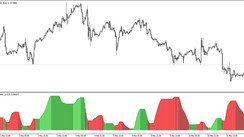US Dollar Fluctuates in Response to Labour Market Reports
On Thursday, the US dollar lost ground following its climb to two-week highs during the previous day. The decline came as the upbeat effect of the surprisingly strong US labor market data started fading. Meanwhile, investors have been preparing for Friday’s critical nonfarm payrolls report.
Earlier, the US currency made gains in response to data that exhibited US private employers adding an unexpectedly higher number of jobs in December. According to the ADP National Employment Report, private payrolls saw an increase of 164,000 jobs during the last month, marking the biggest increase on a monthly basis since August. This surpassed predictions by Reuters' economists, who anticipated an increase of only 115,000 jobs.
State Unemployment Benefits Drive the Dollar's Increase
Complementing the dollar’s initial rise, the introductory state unemployment benefits claims dropped by 18,000, resulting in a seasonally adjusted figure of 202,000 for the closing week of December. This beat previous Reuters' economists' forecasts of 216,000 claims.
The dollar experienced an initial boost following the release of the data; however, these gains have subsided.
Insights into Labour Market Status and Wage Inflation
“Despite the impressive job numbers recorded in the ADP report, it’s important to note that the JOLTS data from yesterday registered lower quit and hiring rates,” remarked Thierry Albert Wizman, Global FX and Rates Strategist at Macquarie in New York. “There is a pricing in of a weakness in the labor market. I believe a manifestation of such weakness might be visible tomorrow in terms of nonfarm payrolls, translating into a dwindled wage inflation," Wizman added.
Impression of US Interest Rates Agendas
Futures of the US interest rate on Thursday recorded scaled down expectations related to the count of rate cuts due for 2024 at four rate reductions of 25 basis points each. This is a reduction from the six cuts forecasted late Wednesday as per the LSEG's interest rate probability application.
Fed's Approach to Cutting Rates
"We should remember the Fed needs to progress through a few stages before it can execute rate cuts," Wizman advised.
"The initial step is adopting a neutral bias, next comes an easing bias and finally the cuts. The entire process could span across a couple of meetings."
Variations in Major Currencies
In the cryptocurrency sector, bitcoin increased by 2.9% to $44,114. This surge comes in anticipation of the approval by the US Securities and Exchange Commission of the first spot bitcoin exchange-traded fund in the upcoming week.
During the late morning trade, the dollar index was recorded slightly lower at 102.33, having reached a two-week high on Wednesday. Meanwhile, the greenback appreciated against the yen to two-week peaks, marking a continuous rise for three straight days.
Outlook on the US Economy and Currencies in the New Year
Wizman points out that despite the dollar’s initial ascent at the start of the year and a pushback in the expectation of rate cuts, he isn't convinced that the dollar’s gains can be maintained. He predicts a slowdown in the US economy that will be led by consumers and a convergence of growth rates between the US and the rest of the world.
Trends in Euro and Sterling
The euro rose by 0.3% against the dollar to reach $1.0956, pushed up by higher inflation data in Europe. In the UK, sterling gained against the dollar, backed by data showing an increase in loan demand by the British borrowers and resiliency of business services in the UK beyond expectations.





